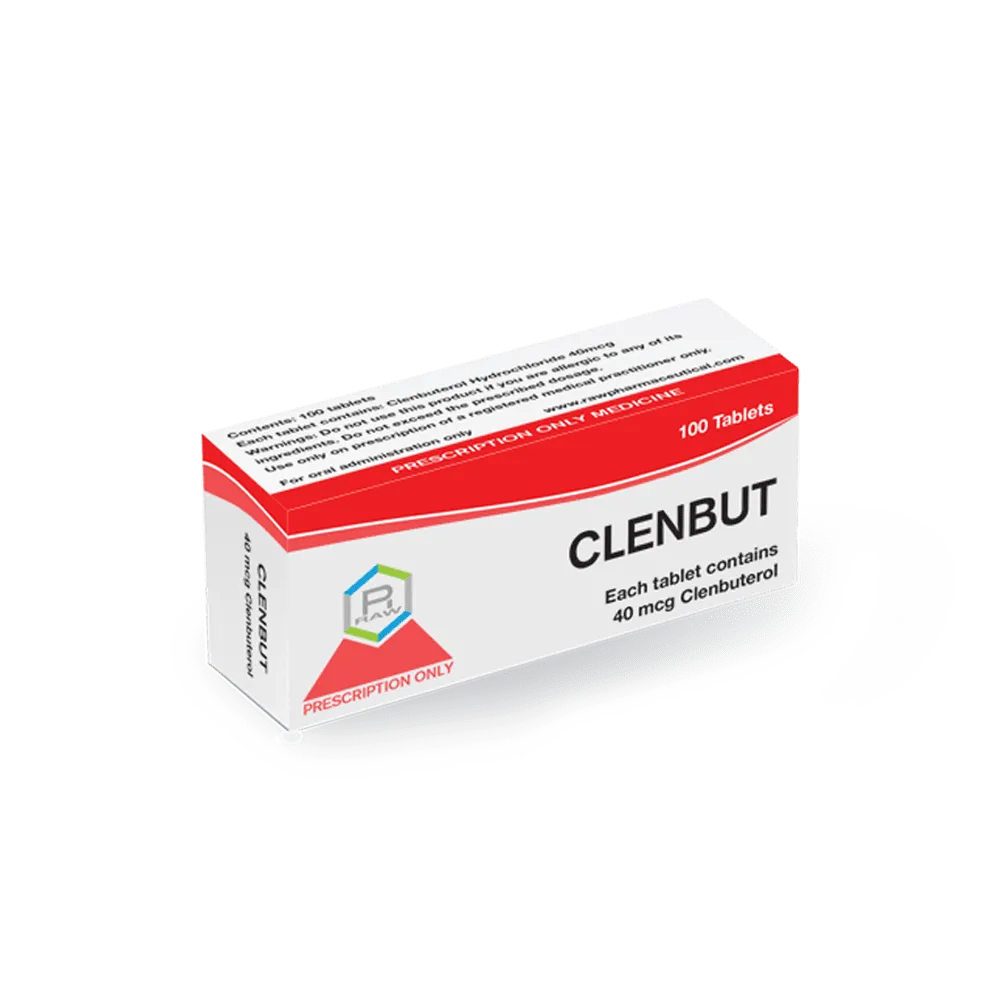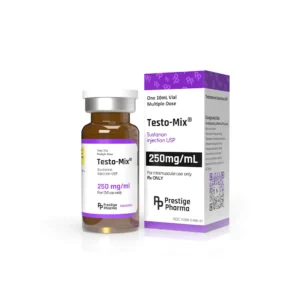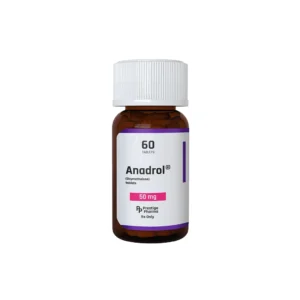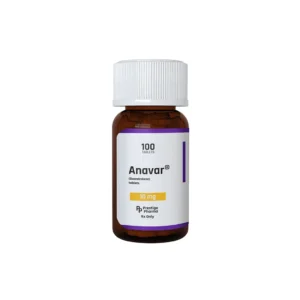Nandrolone Phenylpropionate
Nandrolone Phenylpropionate Clen, buterol is a sympathomimetic amine that mimics the action of adrenaline. It is mainly used to treat asthma and related bronchospasms. Besides human use, it is widely used in veterinary medicine for horses and livestock.
Common brand names for clenbuterol include Clenasma, Monores, Novegam, Prontovent, Spiropent, Broncoterol, Bronchodil, Cesbron, Clenbuter, Pharmachim, Contrasmina, Contraspasmina, Oxyflux, Ventolase, Ventapulmin, and Clenbumar. It is available in tablet form (10 and 20 micrograms) and as a powder for solutions.
For asthma treatment in humans, clenbuterol is typically used in inhalers at doses of 0.02 to 0.03 mg twice daily. At these low doses, side effects are minimal. However, clenbuterol is not approved by the FDA for human use in the United States. Instead, albuterol (salbutamol) is the preferred alternative.
Recently, an oral syrup containing clenbuterol (Ventapulmin) has been introduced in the U.S. for treating horses with airway obstructions like COPD. Ventapulmin has been available in Europe, Australia, Canada, and South America for over a decade. For horses, the recommended treatment duration is 30 days at a dose of 0.8 micrograms per kilogram.

The Rise of Clenbuterol Usage by Athletes
The use of clenbuterol and other β2-agonists in livestock revealed some interesting benefits. In high doses, these drugs increased muscle mass and reduced body fat, earning them the nickname “repartitioning agents.” Clenbuterol, in particular, helps growth by reducing muscle protein breakdown. This led to its use in feeding cattle, sheep, pigs, and poultry to improve meat production. However, there have been cases of people getting poisoned after eating meat from animals given too much clenbuterol.
Athletes find clenbuterol appealing due to its ability to build muscle and burn fat. It’s especially popular in strength sports and bodybuilding. This popularity has grown over the last decade, even surpassing traditional performance-enhancing drugs like steroids and growth hormone.
Clenbuterol gained notoriety during the 1992 Summer Olympics in Barcelona when two athletes tested positive for it. The drug has a long half-life of about 35 hours and can accumulate in the body with repeated use. It is detectable in urine, but 97% of it is cleared from the body within eight days. The International Olympic Committee banned clenbuterol on April 21, 1992. Despite this, many athletes still use it, often unaware of its dangerous side effects when taken in high doses.
Clenbuterol is not approved by the FDA for human use, so there’s limited scientific information on its use and abuse by athletes. Its effectiveness in livestock led to its use by bodybuilders worldwide. New muscle-building drugs are quickly adopted by bodybuilders, often with dangerous results. Unfortunately, scientific research on these drugs lags behind, and bodybuilders rely on trial-and-error, leading to irreversible damage.

Use of Clenbuterol Among Athletes
Clenbuterol usage is highest among bodybuilders, both for its muscle-building properties and its fat-burning effects. The exact dosage that maximizes muscle gain and fat loss is still unknown. This information is crucial for bodybuilders, especially before competitions, to maintain muscle mass during strict dieting.
Shop – Health Wave Pharmacyoften use higher doses of clenbuterol than those recommended for asthma treatment. Typically, athletes use 50 to 100 μg/day or 80 to 140 μg/day, spread throughout the day, depending on individual tolerance. To prevent receptor desensitization, clenbuterol is often used in two- or three-week “on and off” cycles.
Translating effective doses from animal studies to humans is challenging due to differences in size, growth, and metabolism. Some suggest that a dose of 10 μg/kg for rats is equivalent to 1.0 μg/kg for humans, which is considered safe. However, it is unlikely that bodybuilders would stick to this level, given their tendency to take much higher doses of anabolic steroids.
buy nandrolone phenylpropionate us
Another issue is that bodybuilders often use multiple drugs simultaneously, making it hard to gauge the effects of clenbuterol alone. This combination makes it difficult to determine the specific impact of clenbuterol on muscle mass when used with other anabolic steroids.
Effects of Clenbuterol on Muscle Structure and Muscle Composition
The exact mechanisms by which beta-agonists like clenbuterol work at the cellular level are not fully understood. These compounds increase the intracellular concentration of cyclic adenosine monophosphate (cAMP) by binding to beta-adrenoceptors, leading to the activation of adenylate cyclase. This activation influences several metabolic and physiological processes in skeletal muscle, such as glucose uptake, metabolism, growth, heat production, and contractility.
Some Effects and Potential Adverse Side Effects of Clenbuterol
System Effect/Side effect
Cardiovascular Tachycardia (increased heart rate)
Vasodilation
Electrocardiogram changes
Cardiac arrhythmia
Myocardial ischemia
Myocardial necrosis
Potential inotropy
Skeletal muscle Tremor
Spasms/cramps
Other metabolic Glycogenolysis
parameters Gluconeogenesis
Insulin production
Hypokalemia (decreased potassium)
Decreased magnesium
Lipolysis
Increased lactate production
Central nervous Nervousness
system Insomnia
Migraine
Paresthesia
Psychosis
Increased cAMP and protein kinase A in skeletal muscle affect various proteins, including glycolytic enzymes, sarcolemmal Na+/K+ pumps, phospholamban, and Ca2+ channels. Understanding the detailed mechanisms of beta-agonist action on beta-adrenergic receptors is complex and requires further reading on the molecular biology of beta-adrenoceptors, their coupling to adenylate cyclase, the pharmacokinetics of beta2-adrenoceptor drugs, and the regulation of these actions by G-proteins.
In high doses, clenbuterol alters thyroid status, blocking the conversion of T4 to the active T3, which helps explain the alterations in body temperature and increased lipolysis. Alterations in intracellular Na+ and K+ are also thought to be implicated in the process of clenbuterol-induced muscle growth. Clenbuterol has also been reported to be a potent inhibitor of the inflammatory cytokines TNF-α and IL-6.
nandrolone phenylpropionate canada
Clenbuterol treatment has been shown to produce hypertrophy of both fast- and slow-twitch muscle fibers, although the literature is divided on whether the effects are greater in type II (fast-twitch) or type I (slow-twitch) muscle fibers.
Clenbuterol treatment in rats and mice produces slow-to-fast muscle fiber transitions within the predominantly slow soleus muscle. Fiber transitions can also occur within the subtypes of the fast fiber populations, for example, the conversion of fast-oxidative glycolytic (type IIa) fibers toward those having more glycolytic metabolism (i.e., fast glycolytic or type IIb muscle fibers). This means that in animals, chronic clenbuterol treatment will cause typically slow muscles to become more fast-like in terms of their fiber type composition—not just their biochemical makeup (oxidative to glycolytic), but also their myosin heavy chain isoform composition and hence their contractile properties.
Similar fiber type transitions within the skeletal muscles of animals are usually possible only after chronic high-frequency electrical stimulation, and to a very limited extent after exercise. Significant slow-to-fast transitions in the expression of myosin heavy chain isoforms and significant increases in the myofibrillar adenosine triphosphatase (ATPase) activity were found in the diaphragm and soleus muscles of young rats administered clenbuterol during the 21- to 49-day period of postnatal development.
Effects of Clenbuterol on Muscle Strength
There have been numerous studies on animals regarding the use of beta2-agonists and their effects on skeletal muscle. These studies have primarily focused on the therapeutic applications of the anabolic properties of beta2-agonists, such as clenbuterol, for reversing muscle atrophy observed with aging, denervation, muscle unloading, and muscle-wasting diseases such as muscular dystrophy, emphysema, and amyotrophic lateral sclerosis.
Although clenbuterol and other beta2-agonists increase skeletal muscle mass in a variety of species, major inconsistencies exist regarding their effects on the functional properties of normal and diseased skeletal muscle. All of these studies on rats and mice have employed high doses of clenbuterol administered to the animals daily over a period of several weeks or months.
The majority of studies show only minor (or no) improvement in the force-producing capacity and maximal power output of isolated muscles after chronic clenbuterol administration. In many cases, the force output per muscle cross-sectional area is actually reduced after clenbuterol administration, indicating that the intrinsic force-producing capacity of the muscles after treatment does not keep pace with the obvious increases in muscle mass.
Beta-2 agonists including clenbuterol and salbutamol have been used to increase the muscle tissue mass for cardiac assist surgery in which, in conjunction with electrical stimulation, a portion of the latissimus dorsi muscle is wrapped around the heart and stimulated to aid contraction of the ventricle.
There have been only a few studies on the effects of therapeutic doses of beta2-agonists on exercise performance and skeletal muscle function in humans. Morton and colleagues tested 10-second and 30-second sprint cycling performance and leg flexion and leg extension muscular strength in nonasthmatic athletes and found that an acute dose of inhaled salmeterol had no performance-enhancing effects.
Caruso and colleagues reported that nonasthmatic subjects receiving therapeutic doses of albuterol (given as 16 mg/day) for six weeks had improved strength in some exercises compared with untreated subjects, whereas Lemmer and colleagues found no improvement with albuterol in nonasthmatic well-trained cyclists subjected to a 30-second Wingate anaerobic power test. Healthy male subjects receiving a therapeutic dose of the beta-agonist salbutamol for three weeks showed only minor improvements in the strength of their quadriceps muscles compared with subjects given a placebo. Whether these minor alterations in strength would be beneficial to athletes remains untested.
Beta-2 agonists have also been evaluated in human patients as a means of improving the size and strength of muscles affected by neuromuscular diseases or following orthopedic surgery. Orthopedic patients administered clenbuterol did not exhibit any improvement in the absolute strength of their knee extensor muscles compared with patients given placebo. A three-month pilot trial of albuterol given to patients with facioscapulohumeral muscular dystrophy led to improved maximum voluntary isometric contractile performance.
buy nandrolone phenylpropionate Austrelia
Patients with muscle atrophy after spinal cord injury who were given a beta-agonist, metaproterenol, for four weeks showed increased forearm muscle size and strength, whereas patients with spinal cord injury given salbutamol for two weeks showed improvements in the cross-sectional area of their vastus lateralis muscles but no improvement in contractile function. In another study, treatment with the beta2-agonist metaproterenol for four weeks increased muscle size and strength in patients with muscular atrophy following spinal cord injury. Patients with low skeletal muscle strength and exercise capacity due to chronic heart failure showed no improvement in quadriceps muscle mass, maximal isometric strength, or muscle fatigue following treatment with salbutamol for three weeks.
The effects of Clenbuterol on Exercise Performance
Studies on animals have shown that chronic use of clenbuterol in high doses affects exercise performance. For instance, mice subjected to eight weeks of treadmill running combined with clenbuterol treatment showed decreased total work performance, despite increased muscle mass.
Clenbuterol administration in rats disrupted normal muscle adaptations to endurance exercise, reducing glucose transporter content and citrate synthase activity in skeletal muscles. This suggests that clenbuterol may impair muscle oxidative capacity in endurance athletes.
Further research confirmed these negative impacts, showing that long-term clenbuterol use significantly decreased performance in sprint running, endurance swimming, and voluntary running in rats. These findings indicate potential drawbacks for athletes using beta2-agonists to enhance muscle mass or reduce body fat.
buy nandrolone phenylpropionate uk
The International Olympic Committee (IOC) allows the use of the beta2-agonist salbutamol by inhalation for asthma management in athletes. Reports indicate that many athletes at the Olympics have used asthma medications, with a significant number receiving waivers for salbutamol use. While salmeterol and salbutamol improve lung function and cardiorespiratory responses in asthmatic patients, they do not enhance endurance performance in non-asthmatic athletes.
Research on non-asthmatic athletes, including cross-country skiers and cyclists, showed no performance improvements with inhaled beta2-agonists like terbutaline and salmeterol. Instead, these treatments had no significant effects on heart rate, oxygen uptake, or ventilation during exercise.
Beta2-agonists, such as salbutamol, have been used by athletes for performance enhancement, particularly cyclists. However, evidence suggests that the ergogenic effects of salbutamol are minimal compared to clenbuterol. High doses of beta2-agonists can cause vasodilation, reducing peripheral resistance and increasing blood flow and cardiac output. However, these benefits are unlikely with therapeutic use and can lead to adverse effects when taken in large doses for extended periods, ultimately decreasing exercise performance.
In summary, while beta2-agonists like clenbuterol and salbutamol can increase muscle mass, their overall impact on exercise performance is negative, especially in endurance activities. The potential side effects and lack of performance enhancement make them unsuitable for athletic use.
Side Effects of the Chronic Use of Clenbuterol
The side effects of long-term therapeutic use of the beta-2 agonist clenbuterol have been documented. There are two main groups affected by clenbuterol: patients undergoing treatment with these drugs and individuals consuming meat from animals treated with it. Common side effects include nausea, headaches, and insomnia. High doses of clenbuterol, a specific beta-2 agonist, can cause symptoms like muscle tremors, palpitations, muscle cramps, headaches, and widened blood vessels. The most severe side effects are related to the heart.
Beta-2 agonists impact four beta-adrenoceptors in the heart, influencing both cardiac and skeletal muscles. This can lead to significant heart issues, such as tachycardia (rapid heartbeat), cardiac hypertrophy (heart muscle enlargement), and even sudden death in severe cases. Cardiac adaptations involve pathways that can be mitigated by using nonsteroidal anti-inflammatory drugs (NSAIDs).
Studies indicate that high doses of clenbuterol can result in increased cortisol and corticosterone levels, as well as enlarged adrenal glands. Athletes often stop using clenbuterol due to adverse effects like headaches, nervousness, insomnia, rapid heartbeat, increased blood pressure, and various other symptoms. Despite the known side effects, the drug’s impact varies among individuals.
High doses of clenbuterol also lead to behavioral changes in animals, including increased aggression and altered feeding behaviors. Additionally, the use of clenbuterol among bodybuilders can cause muscle cramps, often due to the concurrent use of diuretics, which deplete essential electrolytes.
Chronic use of clenbuterol can lead to severe heart damage, as seen in studies involving animals. The heart damage includes necrosis, edema, and collagen buildup in the heart, significantly impairing heart function. Despite these risks, bodybuilders continue to use clenbuterol in high doses, often exceeding therapeutic recommendations.
Because of these adverse effects, the use of clenbuterol as an animal growth promoter has been questioned. Alternatives like cimaterol and ractopamine have been suggested. It’s clear that athletes using high doses of clenbuterol are at significant risk. Although some side effects may subside after stopping the drug, the long-term impact on heart health remains uncertain. Evidence from animal studies suggests that long-term use can lead to permanent heart damage, affecting cardiac mechanics and exercise performance. Therefore, athletes are advised to avoid clenbuterol due to its dangerous and potentially lethal side effects.




